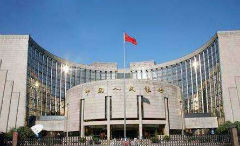Tightened monetary policy expected
2017-12-07
China Daily
 A teller counts money at a bank in Taiyuan, capital of North China's Shanxi province. [Photo/China News Service]
A teller counts money at a bank in Taiyuan, capital of North China's Shanxi province. [Photo/China News Service]
China’s monetary policy is on the way to being further tightened, aiming to curb the soaring debt growth especially in State-owned enterprises and local governments, a former central bank policy advisor said.
“China is wise and capable of tackling risks and challenges” even if the financial sector enters into a phase of “risk explosion”, said Li Yang, director of the National Institution for Finance and Development, or NIFD, under the Chinese Academy of Social Sciences.
Slowing down the money supply is seen as the key to easing the debt ratio, said Li, a former member of the monetary policy committee of the People’s Bank of China, or PBOC.
“Given the current relatively sufficient supplies of money and credit, a prudent and stable monetary policy stance should be taken in the future, to prevent fast expansion of leveraging. We need to pay the price and suffer pain when we dispose of risks,” he said.
Li explained that a reasonable growth rate of money supply should basically be decided by the GDP growth rate and the inflation level.
Sun Guofeng, head of the financial research institute affiliated to the PBOC, also highlighted that the core of a “new framework” of monetary policy is to prevent financial risks, taking financial cycles as a factor in setting the goals of monetary policy.
Central banks need to raise interest rates to prevent commercial banks from taking excessive risks generated by over-lending, he said.
Sun expected that central banks of developed economies may accelerate the normalization process of their monetary policies next year, while emerging economies are expected to withdraw monetary easing policies that were enacted to tackle the global financial crisis about 10 years ago.
The growth of the country’s M2, or the broad measure of money supply, fell to a record low of 8.8 percent in October, down from 9.2 percent in September, partly because of the tightened regulation on “shadow banking”, according to PBOC data.
During the first three quarters, new yuan-denominated lending was 11.2 trillion yuan ($1.69 trillion), 998 billion yuan higher than the same period of 2016, while newly issued loans were as large as 89 percent of the total amount of last year.
“When it comes to the fourth quarter, the credit quota is limited and bank lending is less possible to maintain a fast growth,” according to a research from the NIFD.
It also showed the country’s overall financial leverage risk has dropped, mainly due to the decline of enterprises’ average debt ratio-154.8 percent in the third quarter, compared with 156.3 percent in the second quarter and 157.7 percent in the first.


